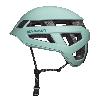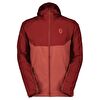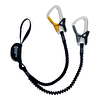First ascents in the Antarctica Queen Maud Land

 1 / 5
1 / 5 Christoph Höbenreich
Christoph Höbenreich
In November 2009 a small Austrian team comprised of organiser and leader Christoph Höbenreich along with Paul Koller and Karl Pichler explored the Queen Maud Land region of Antarctica with the goal of skiing some of the better known peaks around the famous rock cathedral of Ulvetanna (2931m) and exploring and climbing some of the still untouched mountains and peaks of Holtedahlfjella, Kurzevfjella and Conradfjella.
After flying in to Holtanna BC they spent almost a month exploring what Höbenreich describes as "probably the most spectacular ice- and rock landscapes in the world." The trio repeated Tungespissen (2277m), Mundlauga (2455m) and Sandneshatten (2280m) and then set about climbing a series of other, hitherto untouched summits and smaller nunataks. Most peaks were mixed scrambles in rock, snow and ice, such as "Austrian Peak" (2177m), "Peak Styria" (2170m), "Peak Alexey Turchin" (2232m), "Kamelbuckel" (2184m), "Mount Galileo" (2528m) and "Peak of Silent Solitude" (2550m), while their "Tiroler Spitze" (2201m) involved UIAA grade IV rock climbing.
The trip marked Höbenreich's eleventh expedition to the polar regions and his fourth to Antarctic. Published below is a brief interview with this experienced Austrian Mountain Guide and polar explorer.
Let's start with what sounds like a silly question: how does a peak in the Antarctic feel compared to a peak of the same altitude in the Alps?
Due to the thinning of the atmosphere they feel physiologically a bit higher. But to be honest it's not the altitude, it’s the exposedness and loneliness that matters.
Which means...
That you just cannot take any risks out there, rescue is very, very limited! You depend on yourself and your abilities completely.
What are the main difficulties of climbing in the Antarctic?
You are as exposed as you can be on this planet. Of course the climate is harsh – Antarctica is the world's coldest, windiest and driest continent. Climbing and living in the Antarctic mountains makes you feel like an astronaut on an untouched planet.
What are the objective dangers you watch out for most?
Crevasses (falls), frostbite due to low temperatures + wind and severe catabatic storms which can result in the trashing of your campsite, if this isn't built properly.
Positive aspects?
In the midnightsun you can climb "all day" long – you do not need to worry about darkness! And if you dislike crowded basecamps, polluted routes and noisy huts, the Antarctic is the place to go.
You've been to the polar regions on eleven expeditions. How have things changed during this time?
Nature always changes. Especially the Arctic is affected by the consequences of the global warming. Also more and more climbers and skiers are aware of the beauty and wilderness of the polar regions. And I become more curious with each expedition to the poles. I love the beauty of the icy wilderness – the cold is not as painful as it is dry. Of course Antarctica can be hell, but mostly it is heaven!
Which is why you keep returning
There are so many unclimbed mountains left in the Antarctic – I want to go back with another team and explore more and carry out new first ascents. If anybody wants to join me – and fits in a team - he/she is welcome. You do not need to be an extreme alpinist, just physically fit, have endurance and sufficient alpine winter experience. But most important is the heart and spirit for the magnificent polar wilderness.
Alexander Huber raved about the Antarctic after his 2009 expedition to Holtanna and Ulvetanna. How would you sum up your experience?
Mountaineering in the Antarctic is simply the best, it's something I find hard to describe. You need to experience it for yourself to see how it feels to be the first human being on top of a mountain under the blue antarctic skies and in the wide, white wilderness of the polar ice desert. For me it is paradise.
| Links Planetmountain | |
| Antarctic, new routes for Huber, Siegrist and Richl | |
| News Antarctic | |
| Links www | |
| www.aaj.americanalpineclub.org | |



 Copia link
Copia link
























